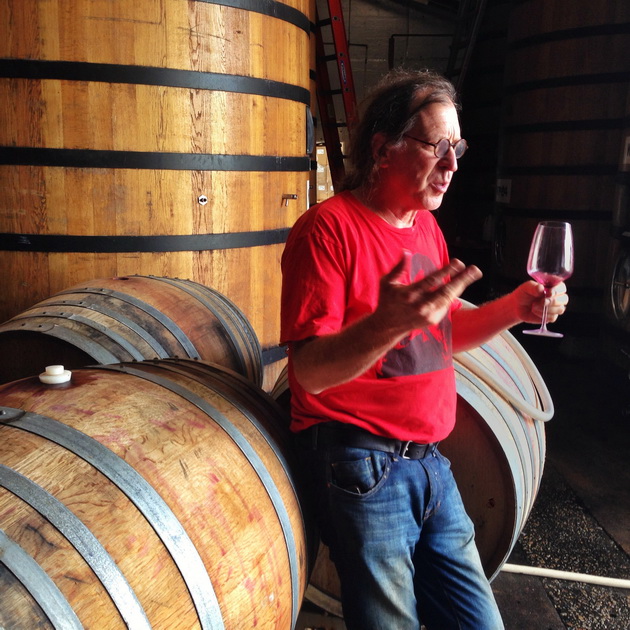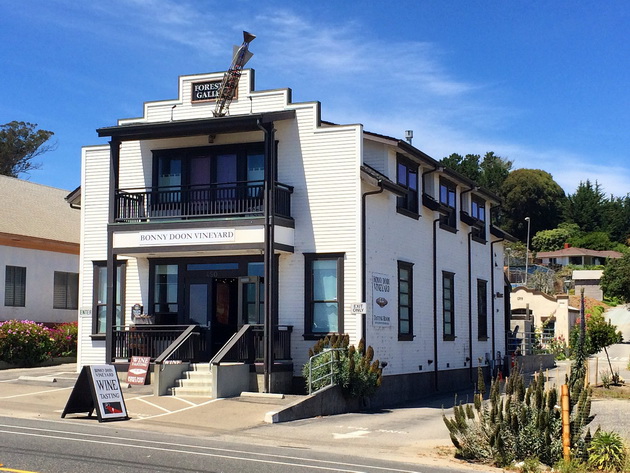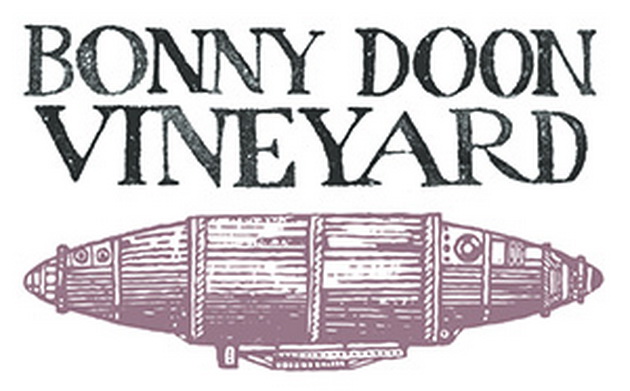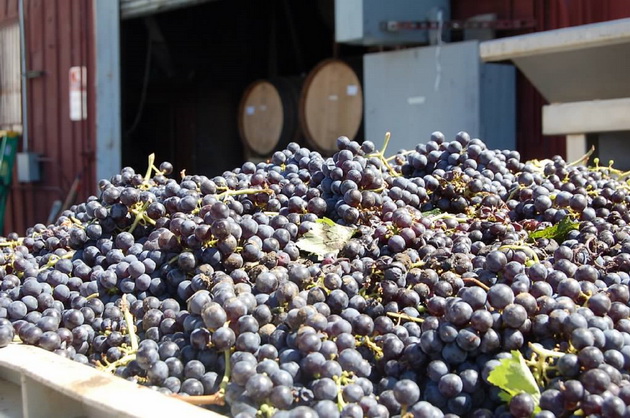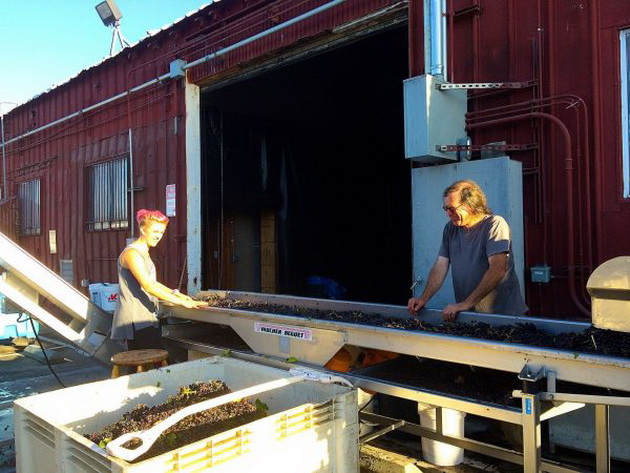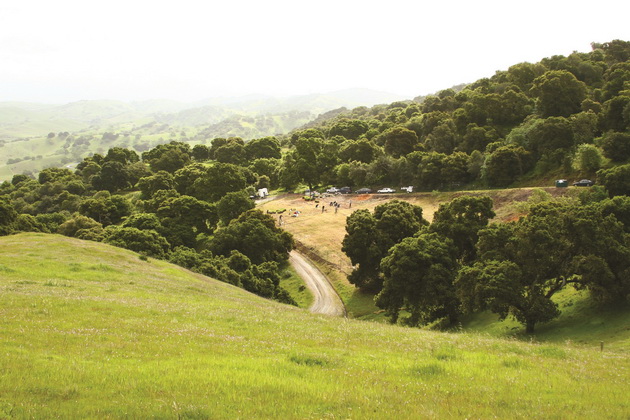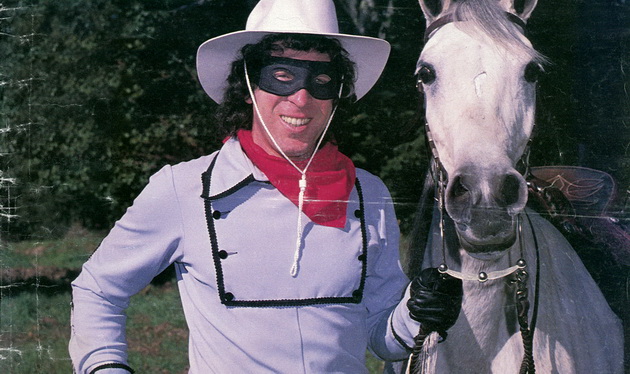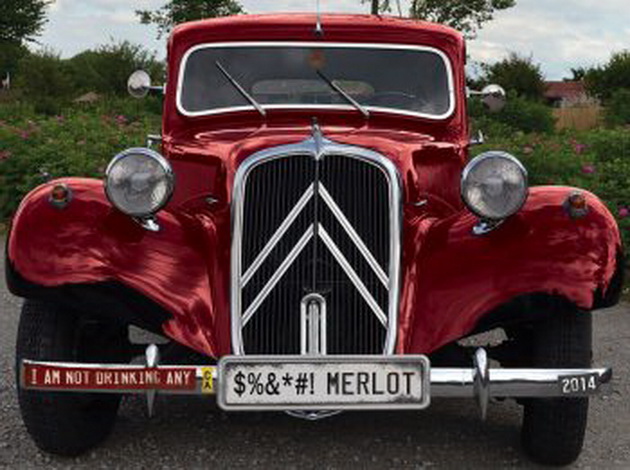What a terrific chat with Randall Grahm of Bonny Doon Winery in California!
Click on the arrow above to watch the video.
Listen to Randall’s stories about hosting a funeral for an open casket of corks in NYC’s Grand Central Station, his experiments with adding rocks to wine and why he has a meteor named after him.
Discover why his wines are superb, his new project on a very special piece of land and his push for ingredient labeling on wine.
Next Sunday, July 30 at 6 pm EST, writer Mark Oldman joins us from New York to chat about his book “How to Drink Like a Billionaire.”
Lots of fun – I hope to see you then!
Cheers,
Natalie
P.S. Tune in here for our next Live Video Wine Tasting:
Want to know when we go live next Sunday with Mark Oldman?
Click on the Follow and Like buttons on this page to get notified when we go live.
We’ll be simultaneously broadcasting on Facebook Live, YouTube Live Stream and Twitter Live Video via Periscope.
Watch previous episodes of the Sunday Sipper Club (SSC) and find out who’s coming up next.
On our first try for this interview above, Randall reads two of his hilarious poems while I try to fix the audio issues.
Click the arrow to watch this video.
If you’d like to read the 108 comments for this tasting, or make a comment yourself, visit:
https://www.facebook.com/natdecants/videos/10155292988504845/
Here’s a sampling of our lively discussion from our tasting…
Sam HauckI totally agree. We do it with nothing else – food, music, art …..
That decent bottle of rosé shared with a special person at a picnic just can’t be beat. Petrus would not have been so pleasurable under the circumstances.
Click on the video above to hear Randall’s story about being in the bathroom of a Danish house when he realized that he was destined to make wine.
You’ll find all of the wines we taste here, along with tasting notes, scores, food pairings and available stock in your closest liquor store.
Randall was born in Los Angeles in 1953 and attended the University of California at Santa Cruz where he was a permanent Liberal Arts major. Some time later he found himself working at the Wine Merchant in Beverly Hills sweeping floors.
By dint of exceptionally good karma he was given the opportunity to taste an ungodly number of great French wines and this singular experience turned him into a complete and insufferable wine fanatic. He returned to the University of California at Davis to complete a degree in Plant Sciences in 1979, where owing to his single-minded obsession with Pinot Noir he was regarded as a bit of a holy terroir in the hallowed halls of the sober and sedate Department of Viticulture and Enology.
With his family’s assistance, Randall purchased property in the Santa Cruz Mountains in a quaint eponymous hamlet known as Bonny Doon, intent on producing the Great American Pinot Noir. The GAPN proved to be systematically elusive but he was greatly encouraged by experimental batches of Rhône varieties, and he has been a tireless champion of the grapes of the Rhône since the inaugural vintage of Le Cigare Volant.
In 1989 Randall appeared on the cover of the Wine Spectator, clad in blue polyester, as “The Rhône Ranger.”
In 1991 Randall was inducted into the Who’s Who of Cooking in America by Cook’s and in the same year was honored to have the “Rhoneranger” asteroid named in his honor. He was proclaimed the Wine and Spirits Professional of the Year by the James Beard Foundation in 1994.
His idiosyncratic newsletters and articles have been collected, carefully redacted, and with the inclusion of some timely new material, published as the award-winning book, “Been Doon So Long: A Randall Grahm Vinthology” in 2009.
In 2010 the Culinary Institute of America inducted him into the Vintner’s Hall of Fame. In 2010, he was incredibly fortunate to have been able to purchase an extraordinary 400-acre property near San Juan Bautista, which he calls “Popelouchum,” (the Mutsun word for “paradise”), and has very ambitious plans to breed 10,000 new grape varieties there and perhaps produce a true vin de terroir in the New World.
He lives in Santa Cruz with his muse Chinshu, their daughter, Amélie, and his thesaurus.
Bonny Doon Vineyard Tasting Room Le Cigare Volant Syrah Grenache 2011
California, United States
While Bonny Doon Vineyard began with the (in retrospect) foolish attempt to replicate Burgundy in California, Randall Grahm realized early on that he would have far more success creating more distinctive and original wines working with Rhône varieties in the Central Coast of California. The key learning here (achieved somewhat accidentally but fortuitously) was that in a warm, Mediterranean climate, it is usually blended wines that are most successful. In 1986 Bonny Doon Vineyard released the inaugural vintage (1984) of Le Cigare Volant, an homage to Châteauneuf-du-Pape, and this continues as the winery’s flagship/starship brand.
Since then, Bonny Doon Vineyard has enjoyed a long history of innovation – the first to truly popularize Rhône grapes in California, to successfully work with cryo-extraction for sundry “Vins de Glacière, the first to utilize microbullage in California, the first to popularize screwcaps for premium wines, and, quite significantly, the first to embrace true transparency in labeling with its ingredient labeling initiative. The upside of all of this activity has brought an extraordinary amount of creativity and research to the California wine scene; the doon-side, as it were, was perhaps an ever so slight inability to focus, to settle doon, if you will, into a single, coherent direction.1
Bonny Doon Vineyard grew and grew with some incredibly popular brands (Big House, Cardinal Zin and Pacific Rim) until it became the 28th largest winery in the United States. Randall came to the realization – better late than Nevers – that he had found that the company had diverged to a great extent from his original intention of producing soulful, distinctive and original wines, and that while it was amusing to be able to get restaurant reservations almost anywhere (the only real tangible perk he was able to discern from the vast scale of the operation), it was time to take a decisive course correction. With this in mind, he sold off the larger brands (Big House and Cardinal Zin) in 2006 and Pacific Rim in 2010.
In the intervening years, the focus of the winery has been to spend far more time working with vineyards in improving their practices, as well as on making wines with a much lighter touch – using indigenous yeast whenever possible, and more or less eschewing vinous maquillage, (at least not to Tammy Faye Bakker-like levels). Recently, Randall has purchased an extraordinary property in San Juan Bautista, which he calls Popelouchum, (the Mutsun word for “paradise,”) where he is profoundly intent on producing singular wines expressive of place. There are also very grand plans afoot to plant a dry-farmed Estate Cigare vineyard. #staydooned.
Red, White and Drunk All Over
A Wine-Soaked Journey from Grape to Glass
Random House, 2006
California’s oldest vineyards may be in Sonoma and Napa, but newer wine regions have emerged south of San Francisco. The weather, grapes, soils and approaches there are radically different; and no one embodies these differences more than Randall Grahm.
The 54-year-old puckish president of Bonny Doon Vineyards defies categories; he’s a man best described by what he’s not. And he’s not like most wine producers in California and the New World, who have, he believes, lost sight of what great wine is: not a confection of the laboratory, but a subtle expression of the soil from which it sprang. He describes himself as “a champion of ugly duckling grapes whose existence is threatened by the dominant chardocentric paradigm.”
In fact, Grahm approaches winemaking like performance art: he has posed in a purple silk cape and mask as The Rhône Ranger for the cover of Wine Spectator magazine and hosted a funeral service for traditional cork. But no one can dismiss him as simply a bad boy or a nutcase because his influence on the American wine industry is as wide as it is deep. He has helped to transform it by introducing less fashionable grapes, experimental winemaking techniques, unconventional marketing and levity in a business that often takes itself too seriously.
I asked Grahm if I could work with him for a couple of days during the harvest. When he agreed, I realized that there was no way to prepare to meet this former philosophy student who has had an asteroid named after him, does cryptic crosswords to relax and admits to being “only mildly sociopathic.” All I could do was brush up on my Socrates while listening to Alice Cooper.
Bonny Doon is an hour’s drive south of San Francisco in the ocean-hugging college town of Santa Cruz. The winery, which sells some 360,000 cases a year, is on a quiet back street. But the building itself seems to trumpet its presence: a bright red corrugated-metal barn with giant cartoon children painted on the sides.
The two-storey doors are open on this warm September morning; the heady smell of fermenting grapes billows out from the shady cool inside. Grahm, in a denim shirt and khaki pants, stands by a gleaming thirty-two-hundred-gallon stainless steel fermentation tank, tasting wine from a small glass. Beside him is Alison Crowe, 28, his associate winemaker.
“Welcome to our Lees Hotel,” Grahm greets me in a voice that sounds as though he’s been gargling with stones from his vineyard. When he says lees, he’s referring to the dead yeast cells, grape seeds and skins that give the wine its color, flavor and body. These eventually settle to the bottom of the tank as fine sediment. “Lees check in, but they don’t check out,” he adds.
Grahm has a weakness for word play: the gait of his thought leaves me mentally thumbing through Bartlett’s Familiar Quotations to decode his mixed metaphors. With his long, impish face, he could be Gene Wilder’s brother. But there’s also something of an eighteenth-century portrait about him—the kind of eyes that follow you wherever you go. Strands of renegade gray hair have come loose from a ponytail to frame his weathered face. He looks like a wild desert man, aflame with ideas.
The wet floor around us is strewn with gray python-sized hoses slithering thirstily up to the tanks. The smell of sulfur and yeast prickles my nose; the whirring tanks circulating the skins and juice to enhance the wine’s color and flavor make it hard to hear. At any other time of the year, a winery is an orderly place of quiet symmetry. But the harvest reveals its pulsing libido, a sticky, chaotic lust for life.
Crowe gives me a tasting glass; Grahm, grinning, hands me the spit bucket. We do the morning “tank walk,” an essential part of the harvest routine: checking how the newly picked grapes are fermenting in the tanks. We also taste the ones that have been aging in barrels for a year. Although young, they’re surprisingly well balanced, with good fruit character and structure.
“French wines rock—they have soul,” Grahm declares over the din, as we taste his syrah. “New World wines are all a façade.”
“Even yours?” I ask.
“Ours are … genuine plywood veneer,” he says. Crowe rolls her eyes with an affectionate smile and crooks two fingers in quotation marks. She’s accustomed to Grahm’s sound bites for the media, having worked for Bonny Doon for four years. She joined after graduating from UC Davis, where Grahm himself trained.
His passion for wine was first ignited after graduating in 1974 from the University of California at Santa Cruz, where he studied literature and philosophy. He moved to Los Angeles and worked at a wine shop in Beverly Hills. There he washed the floors and tasted an “ungodly number of transcendental French wines.” This Dionysian-Damascus experience convinced him to enroll in the UC Davis program. In 1981, two years after graduating, he bought Bonny Doon Vineyards with a loan from his family.
“This zinfandel is a high-needs child,” Grahm says of the wine we’re now tasting. He suggests to Crowe that they increase the tank temperature to speed up fermentation and extract more color from the skins. “If that doesn’t work, we’re stuffed.”
As we taste, Grahm describes yeast as “a fast-food slut” because it devours all the sugar in the grape juice as it ferments the wine. We also talk about tartaric acid, which stabilizes the acidity and the color of wine. Vintners try to remove any excess of this acid by deliberately chilling the wine before bottling to create tartrates, which look like crystal deposits, and then remove them. Otherwise, this process can happen in the bottle and the crystals settle on the inside of the glass or the cork. Tartrates, more common in white wines with high acidity, don’t harm the wines’ taste or aroma, but they can look like tiny glass shards, which alarms some consumers. They’re nicknamed wine diamonds.
All this technical talk is leavened as we walk past one tank bearing a sign with the face of an alien in a circle, with a slash through it. Through the open door to Grahm’s office, I see a disco glitter ball hanging from the ceiling.
When Grahm first started in the business, he planted pinot noir, but quickly learned that those red grapes grow best in a cool climate. California’s warmth, by contrast, was better suited to the grapes that thrive in the Rhône Valley of southern France: syrah, grenache, mourvèdre, cinsault, carignane, roussanne, marsanne and viognier. The inland side of the Californian coastal mountain range, which runs some sixty miles south of San Francisco, mimics the furnace-like heat of the Rhône Valley. Long hot days ripen the grapes; but cool nights add balancing acidity and structure to the wines. Andre Tchelistcheff described the region as “a jewel of ecological elements.” The Santa Cruz Mountains, known as the “golden chain,” were designated an American Viticultural Area in 1981 and soon became known as the Rhône Zone.
Although other pioneers (such as Jim Clendenen of Au Bon Climat, Bob Lindquist of Qupé and Gary Eberle of Eberle Winery) were also planting these grapes, no one did more to popularize them than Grahm. His publicity antics led the trade to dub him “The Rhône Ranger” and in 1992 Arizona’s Lowell Observatory named an asteroid the “Rhôneranger.” (Ted Bowell, an astronomer there, was a big fan of Grahm’s wines.)
In 1984, Grahm bottled his first wine, a red blend in the style of Châteauneuf-du-Pape. He called it Le Cigare Volant, a mocking tribute to the Rhône town’s ordinance passed in 1954 at the peak of the Cold War. It forbade flying saucers (or “flying cigars” as the French call them) from landing in the vineyards. The bottle’s sepia label has the traditional French aesthetic, but also features a spacecraft hovering over a vineyard, zapping it with a Star Trek-style beam.
Grahm named his second tribute to Rhône wines Old Telegram, a literal translation of one of the valley’s great wineries, Domaine du Vieux Télégraphe. The domaine is itself named after the telegraph relay towers that dotted the vineyard a century ago. Grahm’s label looks like a 1950s Western Union telegram.
As we walk through the winery, I spy more of his bottled wines. Their bright labels with splashes of color contrast with the grays, blacks and browns of the building. Their names—from A Clockwork Orange Muscat to a Critique of Pure Riesling—and their illustrations are an extension of Grahm’s whimsical mind. His French syrah is Domaine des Blagueurs, “estate of the jokers,” and his tasting notes describe the wine as having a “Parisian brothel fragrance.” Its label features a Ralph Steadman illustration of a playing card, the joker. One can only imagine the label for a new premium wine he’s thinking of naming Succotash after the Southern corn dish because he likes the idea of “really rich people in fancy restaurants ordering an expensive bottle with such a homely name.
“We don’t have a particularly wine-savvy culture in this country, so a lot of people buy wine based on the label,” he says. “We try to design our labels taking some cues from the wine itself.”
Despite Grahm’s humor and good wine, it was still a challenge to sell his wine in the early 1980s. Back then, Americans were just learning to like domestic cabernet and chardonnay, and to buy them by name. Even in the Old World, the Rhône Valley was always overshadowed by Bordeaux and Burgundy. The challenge was to inform drinkers about the wide range of Rhône wine flavors and their ability to pair well with many dishes.
In those days, the California wine industry was experiencing explosive growth, but most of the attention was focused on Napa Valley. There vintners such as Robert Mondavi, Joseph Phelps and Jacob Beringer were making good wines. Grahm, though, considered himself “anti-Napa,” the opposite of the “Axis of Cabernet-Chardonnay.” He also declared his vineyards a “merlot-free zone,” because merlot is “boring cubed.” In his view, it’s delusional to pay too much attention to the marketplace. “The market is fickle, it doesn’t know what it wants,” he says. “Your best bet is to create something that makes sense to you and then explain to other people what you’ve done.”
The Rhône region got its first big break in the 1980s, when the powerful U.S. wine critic Robert Parker started giving the French wines high scores. That endorsement also helped their New World counterparts. Today, syrah is the fastest-growing, most popular Rhône wine in America—thanks to the Australian invasion of the shiraz, the same grape with a slightly different name. It’s made in a ripe, round style that’s less austere than the French version.
But Grahm isn’t a fan. He describes Australian shiraz as a caricature of syrah: “It’s a thoroughly corrupted grape; it’s got too much of everything. It is not what syrah is about. Syrah is a very refined grape, not a powerhouse wine. It’s a finesse wine, and that’s not a style that’s particularly encouraged in Australia. If it’s from the antipodes, the label is probably yellow and involves a marsupial.
“I’m an Old World guy trapped in a New World life,” he laments.
To be successful today, Grahm says, wine must be “optically opaque, alcoholic, tannic and woody as hell—its vinous Viagrafication.” Despite this sensory onslaught, he opines, “It might be nice if the tannins were strong but on some level soft—sort of like George Clooney or Harrison Ford.”
He believes that winemakers do have a choice: “Either follow your own vision of producing a wine that the world needs—a wine of originality and distinctiveness—or else just create the illusion of distinctiveness by amping up the volume. If you’re in Burgundy, distinctiveness arises from the soil. In the New World, the dilemma is how to legitimize your efforts without relying on the usual suspects: concentration, big fruit, new wood, the Wine Spec and Parker.”
Grahm blames wine critics for giving high scores to such steroid wines, thereby creating a buying frenzy and influencing the future styles vintners choose to make. “It’s much easier to wave around a sign that says ‘94’ than to articulate how you’re different,” Grahm says. Referring to the Wine Spectator’s influential critic James Laube, Grahm quips, “I’d rather have a frontal lobotomy than a Laube in front of me.”
He’s fond of quoting economist Thorstein Veblen’s theory that any pursuit filled with jargon is largely make-believe. He himself has created a “Doon dialect” in winery newsletters that read like Geoffrey Chaucer on LSD, flitting from The Man for La Garnacha to The Love Song of J. Alfred Rootstock. But he doesn’t criticize all wine writers; he has deep respect for Kermit Lynch, the California wine importer and author of Adventures on the Wine Route. “In his writing, he always evoked the place where the wine was made,” Grahm says. “He didn’t chase after the glamorous wines and he was willing to get dirty to understand wine.”
Now that I’ve spent most of the morning listening to Grahm and Crowe discuss volatile acidity, pH, sugar and nitrogen, I’m about to get my own hands dirty. Crowe introduces me to Matt Kenneally, 27, a visiting “cellar rat” from Australia who’s working at Bonny Doon during his country’s winter season. He gives me a pair of knee-high black rubber boots and leads me over to a pile of those python hoses. “Let’s staaart with recking some woin, shell we?” he says in a muscular Aussie accent. He puts a heavy nozzle in my hands and walks away. He’s ten feet off before I realize that I’m supposed to follow him while hauling this hundred-pound sucker.
With much unwriterly grunting and wheezing, I finally catch up with him in front of an empty giant wooden vat. “Now we’re gonna reck the woin over theah into this vet. It’ll be loawds of fan,” Kenneally says with a Tom Sawyer grin. After the first vat is emptied, we wash it with water using a garden hose, then hook the big hose up between the two vats. Kenneally adjusts ten or so valves and then hits a switch to start the transfer. Racking may be done several times before a wine is bottled, depending on the amount of sediment and how much air it needs. It may also be clarified using substances such as egg white or bentonite, a type of clay. Both of these are highly absorptive so they bind to excess proteins, tannins and pigments in the wine and then settle at the bottom.
We spend the rest of the afternoon checking wine vats, including an inspection from a narrow second-storey metal walkway that gives me vertigo. Kenneally uses a hydraulic pulley to take off the giant lids, then records the evaporation levels and the readings on various dials. From above, the big tubs look like witches’ cauldrons of bubbling, frothy purple soup. He whistles a happy little tune as I slog behind him hauling hoses. I’m surprised that someone hasn’t yet published a book called The Total Winery Workout: Develop Harvest Abs, Grape-Crushing Thighs and Buns of Stainless Steel. At last, I have become one with my subject. I feel like a human grape: sticky, purple and completely crushed.
 Bonny Doon Dr. Ying Old Vine Mouvedre
Bonny Doon Dr. Ying Old Vine Mouvedre
At six the next morning, it’s already a hot, heavy day. Silver streaks pierce sunburned pink clouds over Monterey Bay, which sparkles like crushed diamonds. I’m picked up at my hotel by 29-year-old Nicole Walsh, a tall, athletic brunette who is Grahm’s vineyard manager and works with his forty or so grape growers. (Grahm describes himself as a “promiscuous grape buyer—in the words of Brian Wilson, ‘I get around.’”)
I climb into Walsh’s rusty Chevy Silverado, which has several large plastic pails in the back, along with a surf board. “Good morning!” she says, like someone who thinks that 6 a.m. is a good time to be awake. I mumble a reply from behind a shaky cup of black tea.
As we drive down the coast, straight rows of green-stitched vines fly by us on both sides of the road. Strips of aluminum foil, tied to the vineyard rows to frighten hungry birds, flash a thousand tiny mirrored Morse codes. Autumn dyes on the trees smear together as we speed past.
I’m still struggling to put together two consecutive syllables, but Walsh is already voluble. “Randall is such an exception to most vintners,” she says. “He’s always out there trying new things; he doesn’t wait until it’s safe. Last year, we tried whole-cluster fermentation for the riesling: we kept the bunches of grapes together and didn’t de-stem them. Hadn’t been done before. Randall said, ‘Why not?’ so we did and it produced wonderful wine. Not all his ideas work, and I get nervous when he comes up with something in the middle of the harvest; but often it’s worth trying.”
When she’s not telling me about Grahm, Walsh is on her cell phone scheduling plots to be picked, booking cold storage space, discussing lab results and checking weather forecasts. After an hour of this, we arrive at Chequera Vineyard owned by Chris Couture (who looks like John Denver).
Grahm agrees with the Seghesios’ assertion that the best wine is made from the grapes you own. He says it was a strategic error not to have bought vineyards in Bonny Doon’s early days. Now, with land prices so high, it’s not financially feasible to do so. Therefore, he and Walsh work closely with their grape growers with whom they have long-term contracts.
Couture and Walsh walk through the vineyard, eating grapes, spitting out the seeds and discussing when different rows will be picked. I follow with Juan Rendon, the vineyard manager, a Mexican who has worked with Couture for fourteen years. After Couture and Rendon leave us, Walsh kneels and digs her fingers into the soil. “Smell this,” she says. I squat down beside her and put my nose to the handful. The rich dirt has a voluptuous savory-sweet aroma. I have a strange craving to eat it. I can almost feel the ground beneath me seething with microorganisms groping in the dark. The vine roots extend their gnarled fingers blindly down into the soil, whispering: reproduce, reproduce, reproduce.
Grahm believes that good grapes, and hence complex wines, only grow when there’s a healthy and diverse population of microflora competing with the vine roots for nutrients. “You also need to limit the yields and bonsai the vines,” he says, referring to a method of training them close to the ground so the sap doesn’t have as far to travel to the fruit. But since this technique doesn’t permit mechanical harvesting, it’s expensive. It also creates the beautiful chaos of these unruly-looking vines.
“Okay, we’re going to pick now,” Walsh says, standing up and handing me a pail and a small pair of shears.
“All this?” I ask, looking at the twenty-acre spread in alarm.
“No!” she laughs. “We’re just going to pick for a while to see how the grapes are ripening. Why don’t you start down there?” She points to about thirty rows away, at the bottom of the sharply sloping vineyard. “Walk a few paces, then snip off a bunch. Try to vary what you take: some bunches that are shaded, others that are in direct sun, some low down, others at the top. We want to measure the average ripeness.”
At first, I feel like a hero returning to a hometown parade: leafy green vines reach down in front of me on either side, like well-wishers wanting to shake my hand. The wire trellis is for crowd control. But after three hours, the streets are deserted and I’m alone. It’s back-breaking work, carrying an ever-heavier pail, bending down to get the low-hanging fruit, scrambling up and down the 45-degree graveled rows that give the vines excellent drainage but no traction for me. At a distance, I can see Walsh’s head bobbing up from the vines and then disappearing down into them again, like a flying fish in an ocean of green kelp.
Bonny Doon A Proper Claret 2014
California, United States
Up in the marine-blue sky, blackbirds circle like words trying to arrange themselves into a sentence. They’re the bane of grape growers, since they also consider the crop a delicacy. Couture has tried various methods of scaring them off, all ineffectual. He even installed an automatic cannon to fire blanks into the air. But after the first few shots, the birds got used to the sound and took to settling on the cannon, finding it a comfortable roost.
The ancient repetition of vineyard work is meditative: plant, prune, pick, prune. No wonder early cultivators of this art were the Christian brothers, both originally in France and later here in California. Yet the work is also intellectual: my mind soars freely while my body is engaged. However, the work destroys my former notion of vineyard life, which was full of gentle breezes and white verandas. The sun, now directly overhead, is an angry white and beats down on me in a personal way. The stones under my feet fume their stored heat. I envy the spiders that can crawl to the shady underside of leaves. Even my thoughts are bubbling hot—they’ll have to cool and congeal into experience later. I look down at the remnants of my manicured nails. Sweat plasters my hair to my forehead and my bangs fall into my eyes, but this problem is easily solved with the shears. (Now I understand why monks favored the bowl cut.)
Every half hour or so, I head back to Walsh’s truck and we plunge our hands into the pails to squish the grapes like ink-stained laundry. Manic flies, their diaphanous wings glowing like cobalt-stained glass in the sun, take suicide dives into the sweet mess.
“I want to check the pH levels we’re getting from the lab,” Walsh says, taking out something that looks like a small telescope. She splashes grape juice on it and the refractometer measures the Brix (sweetness) in the grapes. “Wow, 23.5 Brix and the weather is supposed to be 95 degrees all week,” she observes, looking through its end. “We’d better pick Monday.”
Getting the timing right is essential for harvest. Pick too early in the season, and the grapes may not be ripe; too late, and excess sugar converts into a clobbering alcohol without any balancing acidity. And no matter how careful you are, nature can always throw in a rainstorm that bloats the grapes and dilutes the wine.
Still, many New World vintners deliberately pick late in the season. Grahm criticizes these “high-impact wines” as boringly overripe. “As primates, we prefer ripe fruit, whether it’s bananas or grapes. It’s just human nature,” he says. “But these wines are like baby food for grown-ups—puréed things with butter and cream in them.” He feels that highly alcoholic wines overwhelm subtle food, just as the new trend to fusion cooking overwhelms nuanced wines. He disapproves of both: “In the New World, wine and food are in two simultaneous monologues—a dysfunctional pairing.”
In fact, New World wines have become increasingly alcoholic in the last five years. Where 10-12 percent alcohol by volume used to be the norm, modern blockbuster reds, such as shiraz and cabernet, often weigh in at 15 percent. Not only do these wines assault the palate, but they make their presence known only when you get up from the dinner table and discover that your legs have turned to jelly.
It’s a welcome moment for me when Walsh announces that we’re done here. But our day is far from over: we cover another hundred miles throughout the afternoon, visiting several more vineyards scattered along the coastal range, picking more grapes at each. I could open a small winery with the ones that we throw out after every testing.
As we drive back along the glittering gold coast in the late afternoon, Walsh suddenly sniffs the air and says, “Green peppers.” I wonder if she’s thinking of dinner—I certainly am. But after a few minutes, we round a corner to see a produce truck pulled off at the side of the road, its load of green peppers spilled mostly in the ditch. I’m impressed by her keen sense of smell, an essential skill in this line of work.
Our final call of the day is the crushing facility at the Monterey Wine Company, a warehouse that processes some 9,000 tons of grapes every fall for Grahm and other winemakers. Making wine is a capital-intensive business, so shared facilities are common.
A rich, sweet smell, like raspberry pie, wafts through the air as we walk between rows of giant steel tanks. A truck loaded with grapes rumbles in and is weighed. As Walsh talks with the manager about the crush, I watch the truck slowly tipping its load over sideways into one of these big steel drums. A massive body of grapes falls out, and then dark red juice gushes out behind like blood. Inside the thundering drum, a large rotor screw separates the grapes from their stems, which are spit out through a pipe—as though even the machine finds them too bitter. (They’ll later be processed into compost.) The de-stemmed grapes are pumped into large presses where the juice is gently squeezed from the skins. Finally the juice is siphoned into tanks, where it can start fermenting. Once fermented, the wine is trucked back to Bonny Doon. (Grahm also ferments some of his wines at his Santa Cruz winery.)
After an hour of this, we emerge from the warehouse blinking in the extravagant light of a California evening, the kind of honey-gold rays that pour through the window in a Vermeer painting. As we drive back, the sun is starting to back off from its heated argument and violet tones unfurl over the vineyards. The darkening fields of grapes are now ghostly line drawings, shadows sketched in a hurry, to be painted into oils tomorrow morning.
I feel a stinging sensation in my blistered fingertips; my muscles quiver in a song of fatigue. Still, I sense that if I just drop into bed after dinner, I’ll seize up. So a few hours after Walsh drops me off, I drive my rental car out to a vineyard. The moon-illumined vines seem strangely alive, swaying in lime-sequined gowns. There’s magic in work that goes on around the clock: walking among the vines at dawn, picking grapes through the day, monitoring the fermenting grapes during the night. I breathe in sweet-scented darkness and exhale the vineyard calm. When I’ve finally released the day’s tension, I head back to my hotel.
Bonny Doon Le Cigare Blanc Roussanne Grenache Blanc 2011
Arroyo Seco, Central Coast, California, United States
The next day I meet with Grahm one more time. After planting Rhône grapes, he tried Italian varieties. Like the Seghesios, he found them difficult to cultivate. His best effort so far is a blend of thirteen Italian and Rhône grapes called Ca’del Solo Big House. The grapes are grown in Soledad, Monterey County, near one of California’s state prisons—a.k.a. “The Big House.” (The name is also a play on “house wine,” but translates into Italian as “house of solitude.”) The label features a cartoon picture of an escaping inmate and the comment that the vines are planted “just beyond the searchlight’s reach of the state penitentiary.” It also warns that this wine might “incite a crime of passion.” Both the red and white versions are popular, and they’re priced in the $10-$15 range.
Grahm now makes more than fifty different wines and admits he’s “never met a grape I didn’t want to crush.” As a result, his vineyard is a menagerie of obscure grapes such as scheurebe, treixadura, loureiro and alvarinho. He’s most interested in those that produce wine with a “hidden zing.”
Some critics take Grahm to task for this lack of focus: they say he plants too many grapes rather than perfecting a few, as Paul Draper has done with zinfandel and Steve Kistler with chardonnay. But while the rest of the state suffers periodic gluts of the big-name grapes, Grahm is sitting pretty with his ugly ducklings. His sales have increased at least 10 percent every year for the past five.
Still, he admits that he hasn’t produced any great wines yet. “New World wines, including mine, are trivial, they’re banal,” he says. The reason, he believes, is that California lacks any real terroir. “True terroir wines are leaner and more subtle and they allow mineral flavors to seep through. I suspect we might have terroir in California, but I don’t know where.”
Grahm believes that mineral character doesn’t just define terroir wines, it also gives them their long life because they have protective acidity. “If you drink New World wine that’s been open for a day, it’s dead, it’s oxidized,” he points out. “Not so with Old World wines, like German riesling or Burgundian pinot noir. They have depth and soul, and lots of life left in them. They are gathered into themselves and complete, like the work of James Joyce.”
The secret to the high standards of French wine—burgundy and bordeaux—Grahm believes, is geology. Bordeaux, five hours southwest of Paris, is influenced by the Garonne River, which runs down from the Pyrénées Mountains on the border of France and Spain and brings in complex layers of clay and gravel over a limestone base. Although infertile for most crops, the land is ideal for wine grapes: the gravel gives excellent drainage, forcing the vine roots to thrust deep down into the rock for water and nutrients—thus, absorbing many nuances that contribute to more complex wines.
For me, great bordeaux is a mansion of a wine, solid and imposing in structure, with stately finishes and designs. At first, it seems locked shut, but as the years pass, long corridors of aromas open up and I discover secret rooms that reveal new dimensions. It is a wine that you can drink again and again as a way of understanding how you’ve changed over time. I can still remember my first glass of one of the region’s finest wines, Château Latour: the taste of furious passion. Rich aromas of cassis, smoke and leather curled around me. Then it finished like a dagger, cutting across my mind to divide my life into what I had drank before Latour and after Latour.
Frustrated with his vineyards’ lack of minerality, Grahm tried adding chips of shale, granite, cobblestone and black slate to several batches of his 2001 Le Cigare Volant as the red grape skins macerated (steeped) in the juice. He jokingly attributed this Rock Quartet idea to “drugs, basically.” He found such a marked difference in the wine’s mineral nuances that he seriously considered importing stones from France for the next vintage—until federal wine regulators told him that he couldn’t do so because it didn’t fall under the rubric of “standard winemaking.” (They were also worried about potential traces of elements such as lead and arsenic getting into the wine.)
Despite his scientific training, Grahm believes that wine can’t be much improved by winemaking tricks. Instead, he says, the new revolution will be in the vineyard. He has even contemplated planting vines in the shape of a helix rather than straight rows because it’s more “agriculturally and cosmically sound.” He adds gleefully, “The California Department of Agriculture would completely freak out, and that would be very satisfying.”
In a more serious vein, he’s trying to reverse-engineer the genetic complexity because he’s concerned that there just isn’t enough genetic variety left in American grape clones, many of which have been grafted from the same nursery rootstock for generations. His ambition is to collect samples and re-establish a large population of genetically different vines.
Grahm prefers to kick and splash away from the mainstream, whether it’s grapes, winemaking, packaging or promotion. After all, he observes, “California started with monks in monasteries, away from the commercial world—we need to return to that cloistered thinking.”
And yet Grahm is very much a man of this world, intent on playing to the very market he claims to mistrust. His concern is that people don’t take him seriously because he plays the fool—a Lear in Falstaff’s clothing. “At my funeral, I don’t want people to say, ‘Wow, he was a great marketer.’”
Behind Grahm’s publicity stunts and circus tricks is some great wine that’s getting better every year. “I do take this seriously,” he tells me, in an uncharacteristically earnest voice, his blue-flame eyes piercing over his tinted glasses. “It’s not just my livelihood; it’s my life’s work. I’d like a good long run at it. And maybe when I’m done, more winemakers will believe that you can take risks and survive—even thrive.”





















